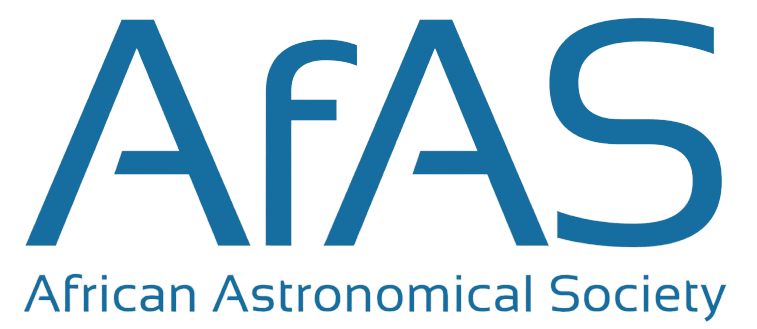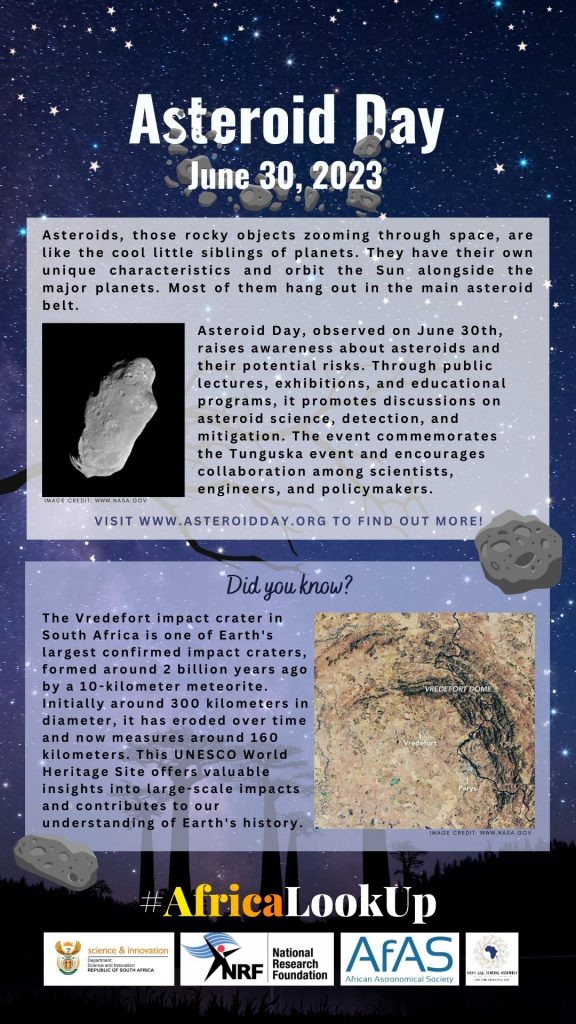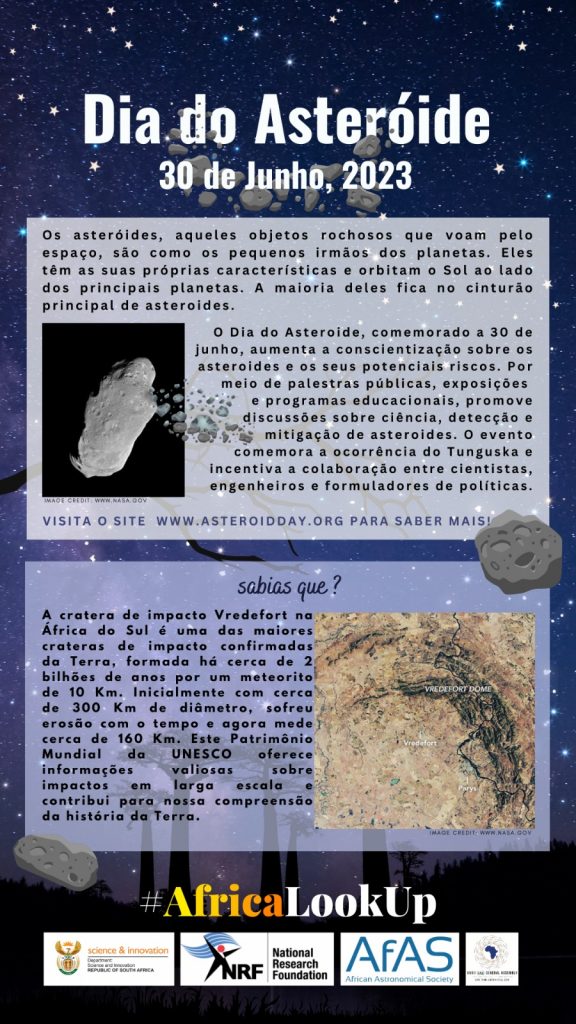#AfricaLookUp
Celebrate World Asteroid Day with us on 30 June 2023!
Join us as we embark on a journey to explore the captivating world of asteroids. As they hurtle through space, asteroids occasionally cross paths with Earth, posing a fascinating yet potential threat. World Asteroid Day serves as a platform to highlight the significance of asteroids in shaping our solar system and the crucial need for vigilance in monitoring, detecting, and mitigating potential impacts.
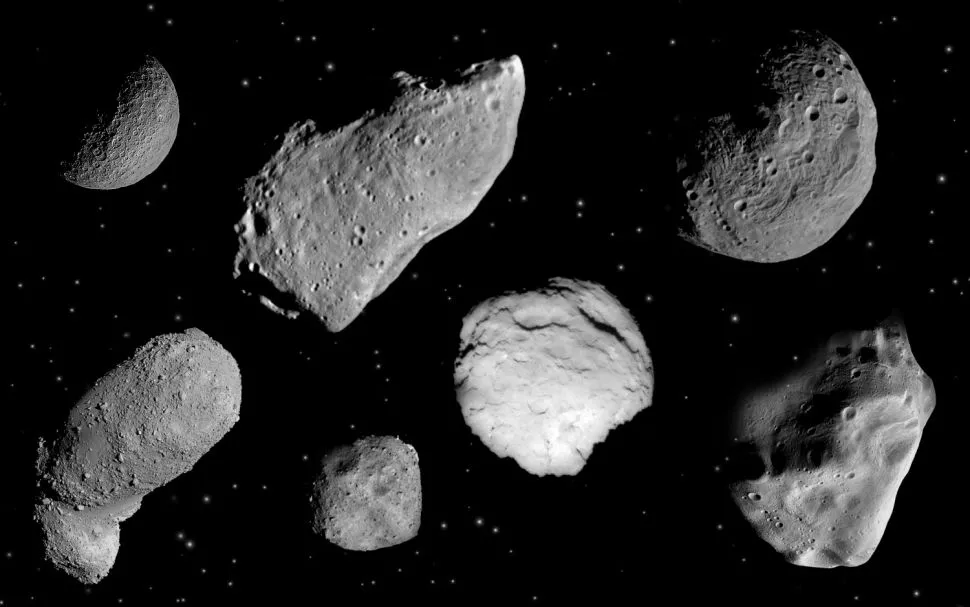
An assortment of asteroids that spacecraft have explored over the years. (Image credit: Space.com; NASA)
Click here to find out how the world is celebrating Asteroid Day on 30 June
Our Posters
Portuguese version translated by Marco Romero.
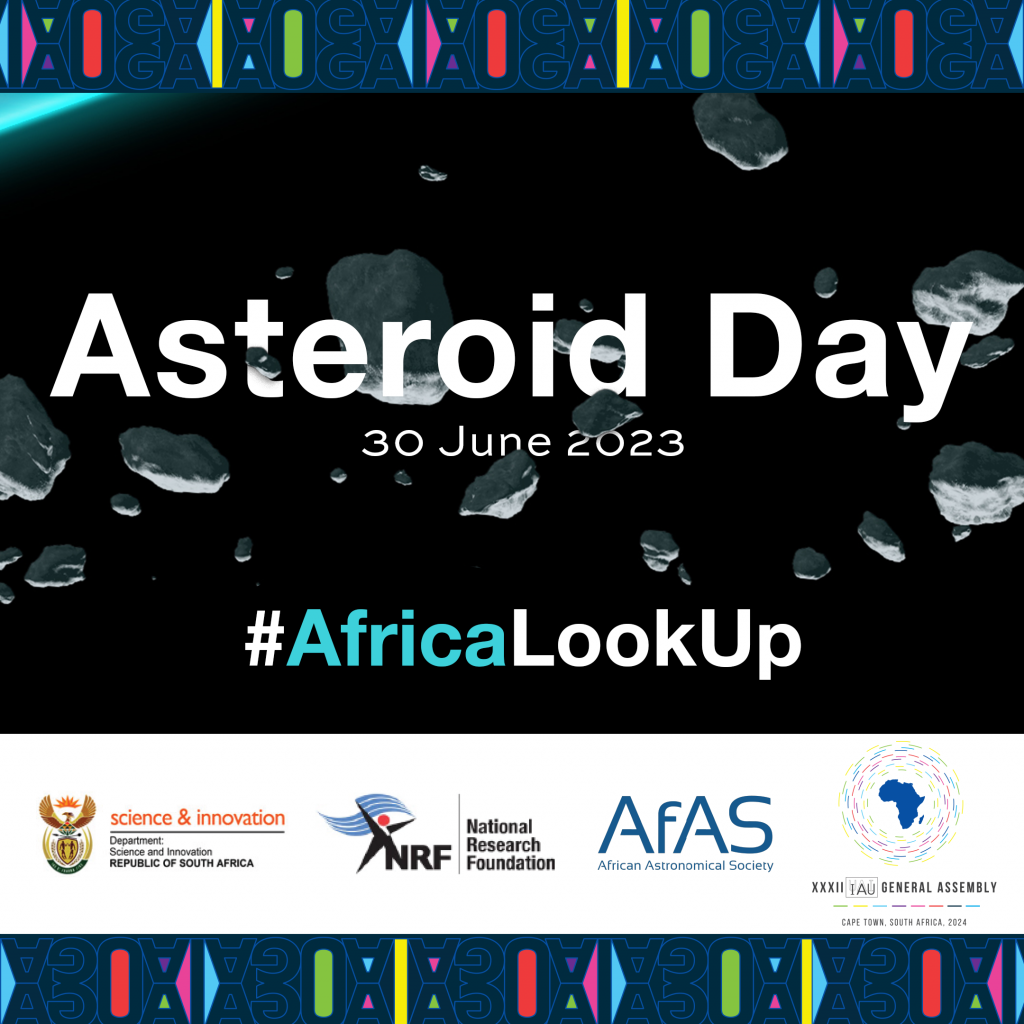
What are asteroids?
Asteroids are rocky objects that race through space. Although they resemble the younger siblings of planets, they are considerably smaller and possess distinct qualities. Commonly referred to as “minor planets,” these small rocky bodies traverse their orbits around the Sun, coexisting with the major planets. The majority of asteroids reside within the main asteroid belt.
There are 3 main types of asteroids:
- C-type: Carbonaceous asteroids, rich in carbon compounds.
- S-type: Silicate asteroids, composed of rocky materials.
- M-type: Metallic asteroids, containing metals like iron and nickel.
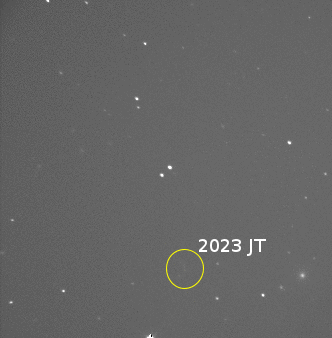
Did you know African researchers are actively using South African telescopes to study asteroids? This series of real scientific images show how the near-Earth asteroid ‘2023 JT’ moves over time compared to background stars. At closest approach to Earth (in early May 2023), this 34-metre asteroid was around 8 times the Earth-moon distance from us. This forms part of research currently being conducted by astronomy MSc student Thobekile Ngwane at the University of Cape Town and the South African Astronomical Observatory (SAAO). The images were produced using the Mookodi instrument on the Lesedi telescope, located at the SAAO in Sutherland, South Africa.
Click this NASA link to find out more about asteroids!
Fun facts about asteroids
- The smallest known asteroid in space is just 1 meter wide, while the largest known asteroid, Ceres, is about 940 kilometers in diameter.
- Theoretical models suggest that water was brought to Earth by asteroid impacts at the end of Earth formation.
- Some asteroids contain organic materials whose properties may be compatible with those of elements required for the emergence of life.
Why are asteroids important?
Asteroids hold valuable clues about the formation of our solar system billions of years ago. These celestial objects offer crucial clues that contribute to our understanding of cosmic history and unveil the potential resources present in space. Furthermore, asteroid research enables us to develop strategies for safeguarding our planet from potential threats.
Protecting Earth:
- By studying asteroids, we can develop technologies to detect and deflect potential asteroid impacts
- Scientists and space agencies work together to ensure our safety, keeping an eye on asteroids that could potentially collide with our planet.
Did you know?
The Vredefort impact crater, located in South Africa, is one of the largest confirmed impact crater on Earth. Formed approximately 2 billion years ago, it is estimated to have been created by a meteorite (a fragment of an asteroid) with a diameter of about 10 kilometers. The crater’s original size is believed to have been roughly 300 kilometers in diameter, but due to erosion over time, its current diameter measures approximately 160 kilometers. The Vredefort impact crater is a UNESCO World Heritage Site and provides valuable insights into the geological processes associated with large-scale impacts, helping scientists understand the history of Earth’s formation and the effects of major cosmic events.

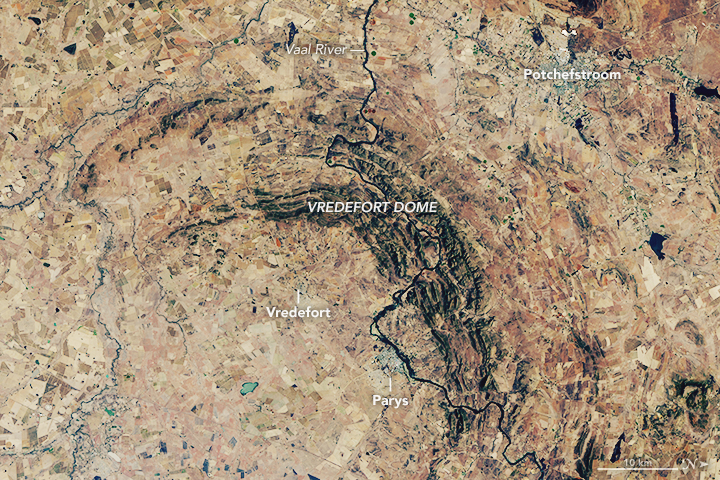
Left: Map showing the approximate footprint of Vredefort Crater in South Africa. The dotted line marks the approximate location of the original crater rim, which has been obscured by erosion in the northwest and covered by sediments in the southeast. The feature marked “Vredefort Dome” is an area of uplifted strata in the center of the crater (Image credit: Oggmus). Right: Vredefort Dome (centre), with the Vaal river running across it; seen from space using the Operational Land Imager on Landsat 8, 27 June 2018 (Image credit: NASA)
Visit this Wiki page about the Vredefort Impact Crater to learn more
Visit this Wiki page to learn more about the different impact craters across Africa
**Get involved: Become a citizen scientist!**
The International Astronomical Search Collaboration (IASC) is an international entity that provides high-quality, fresh asteroid data to ordinary individuals known as citizen scientists. Their program is held monthly, during which the registered participants (citizen scientists) learn how to use a computer program called Astrometrica to search for asteroids. These citizen scientists have the exciting opportunity to make original discoveries and potentially even name them in the future.
An active citizen science organization called the Pan-African Citizen Science e-Lab (PACS e-Lab) is spearheading the asteroid search in Africa. They engage individuals across Africa, including those from space agencies, universities, astronomy organizations, high schools, and more. They also promote other hands-on astronomy activities such as astrophoto image processing, Zooniverse programs, observational astronomy through web telescopes, space arts, competitions, and more.
To learn more about the group’s activities in Africa, you can find them via their Facebook, Twitter, or LinkedIn accounts. For additional information and details on how you can participate, you can reach out to Miracle Chibuzor Marcel at miracle.c.marcel@gmail.com. They are eagerly and excitedly looking forward to working with more passionate Africans who are interested in space and astronomy.


#AfricaLookUp
Let us look at the skies together!
Let’s celebrate the largest gathering of astronomers in the world in Cape Town in 2024!
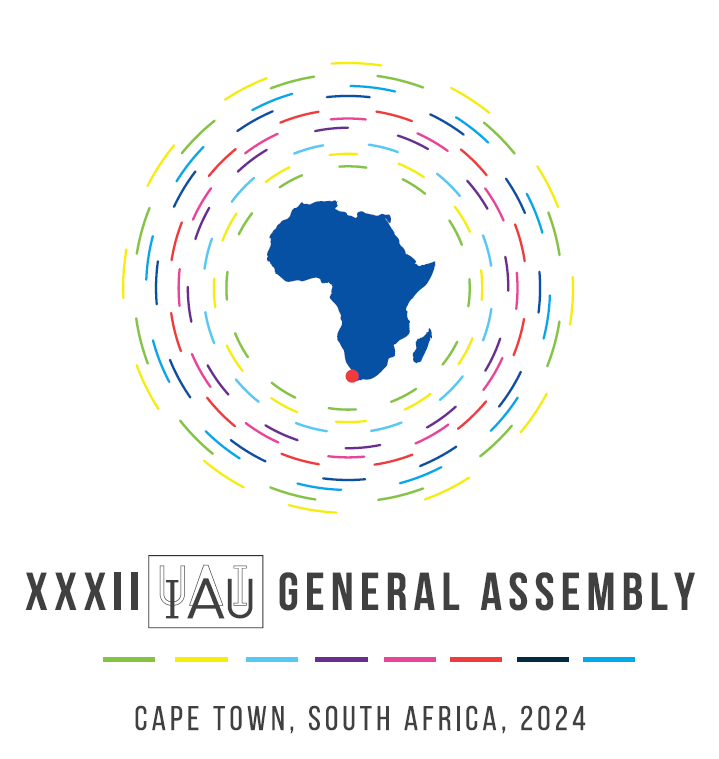
Website: https://astronomy2024.org/ Twitter: https://twitter.com/astronomy2024 Instagram: https://www.instagram.com/astronomy2024
